 What could be better than a tour through our favorite Paris neighborhoods?
What could be better than a tour through our favorite Paris neighborhoods?
I’ve stayed many Paris neighborhoods, and the fact is, I’ve loved them all. You can visit many of our favorite Paris districts on our cooking vacations in Paris. Each street has something new to offer, each Paris arrondissement offers some gem to explore.
That doesn’t mean you can throw a dart at a map and pick where to stay. Quite the contrary, each Paris neighborhood has its pros and cons, which makes a Paris neighborhood guide essential.
Table of Contents
 How Many Arrondissements Are There In Paris?
How Many Arrondissements Are There In Paris?
Paris has over 20 arrondissements, and they each have something to offer. So how do you figure out the best arrondissement to stay in Paris?

But first, what is a Paris arrondissement? The word “arrondissement” is often used to simply mean a neighborhood when one is talking of Paris. It is actually a bit more official than that. A Paris arrondissement is a local administrative district., and in fact what is considered a “neighborhood” in popular culture might bridge more than one arrondissement. Similarly, a single Paris arrondissement might have more than one “neighborhood” in it. (In Chicago, we call these wards, and they also don’t usually follow the borders of what we think of as neighborhoods.)
The 20 Paris arrondissements are identified by primarily by a number, but each also has name associated with it, usually a major site located there. As you will notice on the Paris arrondissement map, the order is a spiral starting in the center, with the 1st arrondissement (Louvre) in the heart of the city. So the lower the arrondissement number, the closer to the center you are.
Home base for our culinary vacations in Paris can be in a variety of different arrondissements. Or, if you have a favorite Paris arrondissement, just request it when we’re organizing your Paris culinary tour!
Paris Arrondissements
 The Paris arrondissements are:
The Paris arrondissements are:
- 1st Arrondissement: Louvre – Obviously, the Louvre is one of the main sites, but you’ll also find the Tuileries Garden, Les Halles, Place Vendôme, and part of the Île de la Cité, the famed island in the Seine River. It’s also home to one of our favorite kitchen supply shops, E.Dehillerin.
- 2nd Arrondissement: Bourse – “Bourse” is the Paris stock exchange, and the 2nd arrondissement is largely a banking, shopping, and textile district.
- 3rd Arrondissement: Temple – “Temple” refers to a medieval fortress built there by the Knights Templar. The 3rd is a popular tourist area, with part of the Marais neighborhood, the Picasso Museum, the Marché des Enfants Rouges covered market, and many shops and restaurants.
 4th Arrondissement: Hôtel-de-Ville – The Hôtel-de-Ville, basically Paris’s version of City Hall, is but one of the many sites in the popular 4th arrondissement. It shares part of the Marais neighborhood with the 3rd, shares part of the Íle de la Cité with the 1st (including the part of the island that is home to the Cathedral of Notre Dame), as well as the Seine’s other island, Île Saint-Louis.
4th Arrondissement: Hôtel-de-Ville – The Hôtel-de-Ville, basically Paris’s version of City Hall, is but one of the many sites in the popular 4th arrondissement. It shares part of the Marais neighborhood with the 3rd, shares part of the Íle de la Cité with the 1st (including the part of the island that is home to the Cathedral of Notre Dame), as well as the Seine’s other island, Île Saint-Louis.- 5th Arrondissement: Panthéon – Although it is called formerly “Panthéon” for the stately monument that is the final resting place of Voltaire, Rousseau, Hugo, and Marie Curie, among others, the 5th is more commonly known as the Latin Quarter. It is home to the Sorbonne university and therefore also to numerous book shops, cafes, and bars. It also includes the Jardin des Plantes.
- 6th Arrondissement: Luxembourg – The beautiful and chic left-bank 6th arrondissement is dominated by the Jardin du Luxembourg (hence the name). But it is also home to the fashionable Saint-Germain-des-Prés neighborood, where you find the cafe “Les Deux Magots,” famous stomping ground of artistes and philosophers such as Hemingway, Sartre, Beauvoir, Picasso, Joyce, and Camus. It is the epitome of what one thinks of when imagining the Left Bank.

- 7th Arrondissement: Palais-Bourbon – This elegant arrondissement might be named for the Palais Bourbon, the meeting place of the French National Assembly, but its most famous site is the Eiffel Tower. It is also home to the Musée d’Orsay, the Musée Rodin, Napoleon’s tomb, the gourmet district of Rue Cler, and more.
- 8th Arrondissement: Élysée – The name refers to the famed Champ Elysées, the broad avenue that connects the Arc de Triomphe to the Place de la Concorde. It is also home to the Élysée Palace, residence of the French President, the Grand Palais, an elegant exhibition hall, and the Petit Palais, an art museum.
- 9th Arrondissement: Opéra – The 9th is known as the theater district, including, as you may infer from the name, the Palais Garnier opera house. It is also beloved for its Grand Boulevards which are lined with shops and restaurants, and which are connected by charming covered passages full of shops featuring antiques, books, and fine arts.
- 10th Arrondissement: Entrepôt – “Entrepôt” means warehouse, likely a nod to the quarter’s industrial roots, but is now known as being home to two of the main rail stations, the Gare du Nord and Gard de l’Est, as well as for its vibrant and picturesque ethnic neighborhoods.
- 11th Arrondissement: Popincourt – Presumably named for the street of the same name, the 11th is one of the most populated arrondissements of Paris, and while not a major site for tourist monuments, is home to fashionable restaurants, cafes, and a popular nightlife scene.
- 12th Arrondissement: Reuilly – This large and residential arrondissement is dominated by the large park, Wood of Vincennes.
- 13th Arrondissement: Gobelins – Named for the Gobelins Manufactory, a historic tapestry factory, it is now home Paris’s Asian district, which is why you’ll find fabulous Asian groceries and eateries there.
 14th Arrondissement: Observatoire – Sure, it’s home to the Paris Observatory, but what most people go to the 14th for is the artsy Montparnasse neighborhood and the Paris catacombs.
14th Arrondissement: Observatoire – Sure, it’s home to the Paris Observatory, but what most people go to the 14th for is the artsy Montparnasse neighborhood and the Paris catacombs.- 15th Arrondissement: Vaugirard – The 15th is largely a residential district, named for the large Rue de Vaugirard that runs through its center. Its riverfront park, the Quai de Grenelle, features Paris’s smaller version of the Statue of Liberty.
- 16th Arrondissement: Passy – This posh Paris arrondissement is named for the fashionable Passy neighborhood, which was once its own village and is now home to some of the city’s wealthiest residents. It also features embassies, the large Bois de Boulogne, and the Maison de Balzac.
- 17th Arrondissement: Batignolles-Monceau – While it lacks notable monuments and museums, the 17th arrondissement is known for its beautiful architecture, and is among the most “Haussmannien.” That is, in keeping with the aesthetic vision of Georges-Eugène Haussmann, who modernized much of Paris’s design in the 19th Century.
 18th Arrondissement: Butte-Montmartre – The 18th is most known for the Bohemian hilltop town of Montmartre (also called “La Butte,” meaning hill), which was home to many famous artists, and is still home to the iconic Moulin Rouge cabaret, a bustling nightlife, and the Basilica of the Sacré-Coeur.
18th Arrondissement: Butte-Montmartre – The 18th is most known for the Bohemian hilltop town of Montmartre (also called “La Butte,” meaning hill), which was home to many famous artists, and is still home to the iconic Moulin Rouge cabaret, a bustling nightlife, and the Basilica of the Sacré-Coeur.- 19th Arrondissement: Buttes-Chaumont – The 19th lies next to Montmartre and features several parks, including the beautiful Parc des Buttes-Chaumont.
- 20th Arrondissement: Ménilmontant – The trendy 20th arrondissement of Paris is full of young, arty hipsters, contemporary art galleries, bars and music halls, ethnic eateries, and the famed Père Lachaise Cemetery.
Best Neighborhoods In Paris
Now that we’re familiar with the Paris arrondissements, what is the best arrondissement to stay in Paris during our cooking vacations, and what is the best neighborhood to stay in Paris?
 Le Marais (3rd and 4th)
Le Marais (3rd and 4th)
Straddling the border between the 3rd and 4th arrondissements and nestled on the right bank of the Seine lies one of my favorite parts of Paris, Le Marais neighborhood. It used to be the noble quarter, home to the most chic residences of the French aristocracy before the revolution. After the revolution, it became known as a Jewish quarter.
Today the Marais district of Paris has many shops, restaurants, a thriving LGBTQ community, and of course beautiful residences in the former homes of aristocrats. It’s also known as one of the few remaining medieval parts of Paris, where the streets are narrower, the houses closer together. The neighborhood escaped the sweeping changes wrought in many areas by Haussmann’s transformation of Paris into a modern city during the 19th century.
This makes it one of the best neighborhoods to stay in Paris on our Paris cooking vacations, as it is fun to wander around its winding streets, it is accessible by foot to the 4th and 1st arrondissements, and its a great place to stop for a coffee, a meal, or a glass of wine.
 Getting to and from Le Marais in Paris
Getting to and from Le Marais in Paris
If you are traveling to the Marais district of Paris by metro, these are the nearest stops:
- Line 1: Hôtel-de-Ville, Saint-Paul, or Bastille
- Line 3: Temple
- Line 8: Chemin Vert or Filles du Calvaire
- Line 11: Hôtel-du-Ville or Rambuteau
The metro stops are on the edge of the Marais district, and rest you will want to do on foot.
Things to Do in Le Marais, Paris
 As I mentioned, Le Marais is full of shops, cafes, and restaurants, so it is easy to entertain yourself wandering through its streets. But here are some places to check out:
As I mentioned, Le Marais is full of shops, cafes, and restaurants, so it is easy to entertain yourself wandering through its streets. But here are some places to check out:
- Place des Vosges: This park in the southeastern part of the Marais is the oldest planned square in Paris, and it still maintains the grandeur of its glory days.
- Rue des Rosiers: This street is the heart of the old Jewish quarter, and is lined with boutiques and restaurants.
- Rue François Miron: Home to some of the few remaining medieval, half-timbered houses in Paris.
- Église Saint-Paul Saint-Louis: This is a small, picturesque church from the 17th century.
- Maison de Victor Hugo: The former home of the French author of Les Misérables is now a museum in his honor (and is located on the Place des Vosges).

- Picasso Museum: The collection includes thousands of art works by the Spanish artist. (And while you’re so close, why not pop into the Centre Pompidou, Paris’s premier museum of contemporary and modern art?)
- La Droguerie: Located on the Rue des Rosiers, this tiny crêperie is the perfect place to stop for a quick bite.
- Aux Merveilleux de Fred: A patisserie shop specializing in Merveilleux, a type of meringue cake covered with whipped cream and chocolate shavings.
- Marché des Enfants Rouges: This market was established almost 400 years ago and is the oldest covered market in Paris.
- Camille: Stop in this quintessential French restaurant for a meal.
- Cafe Charlot: Located right by the Marché dest Enfants Rouges, stop for a coffee or glass of wine, not to mention some people watching, while enjoying their outside seating.
 Le Quartier Latin (Latin Quarter)
Le Quartier Latin (Latin Quarter)
Another of our favorite areas is the 5th arrondissement’s Latin Quarter. Located on the left bank and near the Sorbonne, the Latin quarter of Paris is a place of youth and vibrancy, with a bustling nightlife. Its name comes from the fact that Latin was the language of the university. Today, in addition to the many bars, clubs, cafes, and bistros you find in the area, you can also find some wonderful (and wonderfully inexpensive) ethnic eateries catering to students.
 Getting to and from the Latin Quarter
Getting to and from the Latin Quarter
If you are traveling to the Latin Quarter of Paris by metro, it is served by several lines with multiple stops, including:
- Line 4: Saint-Michel Notre-Dame, Odéon
- Line 7: Jussieu, Place Monge, Censier-Daubenton
- Line 10 Odéon, Cluny-La Sorbonne, Maubert-Mutualité, Cardinal Lemoine, Jussieu
- It is also served by the RER lines B and C at the Saint-Michel Notre-Dame stop.
Things to Do in the Latin Quarter, Paris
 Make sure you leave plenty of time to discover the Latin Quarter in our Paris culinary vacations, as it is a wonderful place to explore. Here are some of our favorite places to check out in the Latin Quarter of Paris:
Make sure you leave plenty of time to discover the Latin Quarter in our Paris culinary vacations, as it is a wonderful place to explore. Here are some of our favorite places to check out in the Latin Quarter of Paris:
- Panthéon: This national monument, completed in 1789, is where famous French citizens are interred, including Voltaire, Rousseau, Hugo, and Marie Curie. It is also home to Foucault’s Pendulum.
- Shakespeare & Company: The original Shakespeare & Company was a bookstore frequented in the 1920s by James Joyce, Ernest Hemingway, Ezra Pound, and a slew of other famous authors. Its current manifestation is not the original, but pays homage to it and is still a popular site in the quarter.
- Rue Mouffetard: Running through the center of the Latin Quarter, the Rue Mouffetard is full of shops, cafes, restaurants, as well as an open air market.
- Jardin des Plantes: One of the largest parks in Paris, it was originally dedicated to medicinal plants and includes gardens, a small zoo, a few menageries, a botanical school, and the Natural History Museum.
- La Tour d’Argent: As classic as they come, this river-front restaurant has been around for centuries.
- Pacha Restaurant: Not looking for classic French? Try this Turkish restaurant for a quick sandwich or a sit down meal.
Stay in the Latin Quarter on a Weekend in Paris.
Canal Saint-Martin
 Head to the 10th arrondissement to experience the hip side of Paris in the Canal Saint-Martin neighborhood. The canal is a waterway that cuts through the arrondissement from the Parc de la Villette to the Seine. Although closer to the center the canal is covered, here it is open, full of students, and lined with cafes, bars, and restaurants. It’s a fun, inexpensive neighborhood with a young vibe.
Head to the 10th arrondissement to experience the hip side of Paris in the Canal Saint-Martin neighborhood. The canal is a waterway that cuts through the arrondissement from the Parc de la Villette to the Seine. Although closer to the center the canal is covered, here it is open, full of students, and lined with cafes, bars, and restaurants. It’s a fun, inexpensive neighborhood with a young vibe.
Getting to and from Canal Saint-Martin
 If you are traveling to the Canal Saint-Martin neighborhood in Paris by metro, it is served by several lines including:
If you are traveling to the Canal Saint-Martin neighborhood in Paris by metro, it is served by several lines including:
- Line 2: Jaurès, Colonel Fabien, Stalingrad
- Line 3: République
- Line 4: Chåteau d’Eau
- Line 5: Jaurès, Jacques Bonsergent, République, Stalingrad
- Line 7: Louis Blanc, Stalingrad
- Line 8: République
- Line 9: République
- Line 11: Gongourt, République
 Things to Do in the Canal Saint-Martin neighborhood
Things to Do in the Canal Saint-Martin neighborhood
The Canal Saint-Martin neighborhood is a fun, vibrant place to visit during your culinary tour in Paris. Fun sites include:
- The Canal: Recreate a scene from the movie “Amelie” and try skipping stones in the canal or just relax along its banks.
- Marché Saint-Quentin: This is the largest covered market in Paris, home to butchers, fishmongers, flower shops, and a host of vegetables and fruit sellers.
- Marché Saint-Martin: The second of the area’s covered markets, you’ll find an amazing assortment of foods to try.
- Hôspital Saint-Louis: This 17th-century hospital is worth visiting to check out its elegant interior garden, which closely resembles the Place des Vosges.
- Ten Belles Cafe: Hit up this cozy spot for a cup of coffee before heading to the canal for a walk or a few hours with a good book.
- Point Éphémère: Head to this warehouse space-turned-restaurant-cafe-music-venue for a taste of modern Parisian culture.
Montmartre (18th)
 The Montmartre neighborhood in Paris, in the 18th arrondissement, is one of Paris’s premier art neighborhoods, former home to such icons of the art world as Monet, Modigliani, and Renoir. It’s winding, cobblestoned streets and village-like feel make it one of the top neighborhoods to explore in Paris. It has inspired or been featured in so much art, film, and literature, that it is one of the most recognizable of Paris neighborhoods.
The Montmartre neighborhood in Paris, in the 18th arrondissement, is one of Paris’s premier art neighborhoods, former home to such icons of the art world as Monet, Modigliani, and Renoir. It’s winding, cobblestoned streets and village-like feel make it one of the top neighborhoods to explore in Paris. It has inspired or been featured in so much art, film, and literature, that it is one of the most recognizable of Paris neighborhoods.
 Getting to and from Montmartre in Paris
Getting to and from Montmartre in Paris
The Montmartre neighborhood in Paris is easy to get to by metro:
- Line 2: Anvers, Blanche
- Line 12: Abbesses, Lamarck Caulaincourt
- You might also take the Funiculaire de Montmartre, which will take you from the base of Montmartre to the top.
Things to do in Montmartre
 There are many amazing things to do and see in the Montmartre neighborhood in Paris, from the obvious to the off the beaten path.
There are many amazing things to do and see in the Montmartre neighborhood in Paris, from the obvious to the off the beaten path.
- Place du Tertre: It’s one of the more touristy sites in Montmartre, but this square with its artist-lined streets and incredible views is a must when you’re in Montmartre.
- Basilica of the Sacre Coeur: Near the Place du Tertre, you can’t miss the huge, white-domed basilica perched atop the “butte” (hill).
- Rue des Abbesses: Stroll along this picturesque street with the locals and shop or stop for a coffee or aperitif. Some call it the best street in Paris!
- Moulin Rouge: Located at the boarder of the Montmartre and Pigalle neighborhoods, this is Paris’s most famous cabaret.
- Une Glace a Paris: Taste the delicious French “glace” (ice cream) while taking in the sites.
- Les Deux Moulins: Head to the 1950’s inspired cafe that was featured in the movie “Amelie.”
- Le Cabanon de la Butte: Seasonal French fare with unparalleled views–what more could you ask for?
L’Opéra
 On my last stay in Paris we stayed in the Opéra district, which is in the 9th arrondissement. The area is partially a commercial center, home to banks, several wide Haussmannian boulevards (including the Boulevard Haussmann), and monuments such as the Opéra Garnier. But it also has fabulous shops, small streets lined with restaurants and bakeries, and old-fashioned arcades with antique shops, art galleries, and book sellers.
On my last stay in Paris we stayed in the Opéra district, which is in the 9th arrondissement. The area is partially a commercial center, home to banks, several wide Haussmannian boulevards (including the Boulevard Haussmann), and monuments such as the Opéra Garnier. But it also has fabulous shops, small streets lined with restaurants and bakeries, and old-fashioned arcades with antique shops, art galleries, and book sellers.
Getting to and from L’Opera Neighborhood in Paris
 The L’Opéra neighborhood in Paris is served by several lines with many stops:
The L’Opéra neighborhood in Paris is served by several lines with many stops:
- Line 3: Opéra
- Line 7: Cadet, Le Peletier, Chaussée d’Antin (La Fayette), Opéra
- Line 8: Opéra, Richelieu-Drouot, Grande Boulevards
- Line 9: Chaussée d’Antin (La Fayette), Richelieu-Drouot, Grand Boulevards
- Line 12: Saint-Georges, Notre-Dame de Lorette, Trinité d’Estienne d’Orves
Things to do in L’Opéra Neighborhood

There Opéra neighborhood is known as one of the premier shopping areas of the city, but it is also full of restaurants and cultural sites that you can explore on our Paris cooking vacations:
- Palais Garnier: Visit this beautiful and lavish nineteenth-century Opera house (which today is usually used to host ballets). It is worth seeing both inside and out, and you don’t need to attend a performance to tour it (although we recommend catching one if you can).
- Galeries Lafayette & Printemps Haussmann: If shopping is your thing, this the neighborhood for you. The Galleries Lafayette and the Printemps Haussmann are two of the largest and most jaw-dropping department stores, and worth seeing even if you don’t want to purchase anything. You can also head up to their rooftop terraces for a drink and to soak up the views of Paris.
- Covered passages: After shopping in some of the largest stores in Paris, head to the quaint covered passages where vendors sell antiques, books, and art in quaint shops.
- À la Mère de Famille: Visit the flagship store of these famous sweet shops. It’s a candy store, patisserie, and chocolatier in one. Go there hungry!
- Boulevard Haussmann: Strolling along this or one of the other grand boulevards of the neighborhood will give you a sense better than anything else of the aesthetics of Haussmann’s redesign of Paris.
- Rue des Martyrs: Just to the north in the SoPi (South Pigalle) neighborhood, the historic Rue des Martyrs is lined with restaurants and shops.
- Le Chenin: An unpretentious, casual eatery with traditional French fare and a generous collection of wines by the glass.
- Le Bon George: A French bistro offering season fare paired to match its extensive wine list.
Bastille
 The name “Bastille” is known throughout the world as the name of the prison that was stormed to start the French Revolution in 1789. Today there is no prison, just a lively neighborhood straddling the 4th, 11th, and 12th arrondissements. It, like the Canal Saint-Martin neighborhood, is an affordable and fun arrondissement.
The name “Bastille” is known throughout the world as the name of the prison that was stormed to start the French Revolution in 1789. Today there is no prison, just a lively neighborhood straddling the 4th, 11th, and 12th arrondissements. It, like the Canal Saint-Martin neighborhood, is an affordable and fun arrondissement.
Getting to and from the Bastille Neighborhood
Getting to the Bastille neighborhood in Paris is easy with several metro lines going there:
- Line 1: Reuilly-Diderot
- Line 5: Bréguet-Sabin, Ledru-Rollin
- Line 8: Chemin Vert, Faidherbe-Chaligny, Reuilly-Diderot
- Line 9: Charonne
Things to do in the Bastille Neighborhood
 Although it doesn’t have a wealth of cultural site, the Bastille neighborhood is full of fun bars, nightclubs, and restaurants.
Although it doesn’t have a wealth of cultural site, the Bastille neighborhood is full of fun bars, nightclubs, and restaurants.
- L’Opéra Bastille: We just talked about the Opéra district, but this is the modern opera house of Paris, where most of the opera performances are held. It’s not a site to tour like the Palais Garnier, but it’s fun to catch an opera here while in Paris.
- Rue Crémieux: Sure, it’s a place where tourists go for a quick selfie, but this one-block, pedestrian street is lined with colorful homes (former workers’ housing), and is so picturesque you’ll put up with the other tourists.
- JJ Beaumarchais: Located on the Boulevard Beaumarchais, this restaurant offers tasting menus for lunch and dinner with superb and elegant seasonal fare.
- Blé Sucré: It’s worth traveling to the Bastille neighborhood just to try the wares at this bakery, considered by some one of the best in Paris. The croissants are to die for.
- Monshiner: To get to this Parisian speakeasy you must first pass through a pizzeria and then the door of the walk-in refrigerator, but once there you can enjoy the cocktails and feel as hip as the bartenders to know the place even exists.
 Champs-Élysées
Champs-Élysées
Perhaps the most famous street in Paris, this large boulevard in the 8th arrondissement runs from the Arc de Triomphe to the Place de la Concorde. It is lined with cafes, luxury shops, chain stores, and restaurants. Whether you want to shop, sit and people-walk, or take a long stroll down the avenue, it is one of the ultimate Paris experiences.
Getting to and from the Champs-Élysées
 The Champs-Élysées neighborhood in Paris is served by several metro lines:
The Champs-Élysées neighborhood in Paris is served by several metro lines:
- Line 1: Argentine, Charles-de-Gaulle-Étoile, George V, Franklin D. Roosevelt, Champs-Elysées-Clémenceau, Concorde
- Line 2: Charles-de-Gaulle-Étoile
- Line 6: Charles-de-Gaulle-Étoile
- Line 8: Concorde
- Line 9: Franklin D. Roosevelt, Saint-Philippe-du-Roule
- Line 12: Concorde
- Line 13: Champs-Elysées-Clémenceau
Things to do in the Champs-Élysées Neighborhood
 Like the Opéra neighborhood, the Champs-Élysées is known as a premier shopping district, but it also has several cultural sites to explore.
Like the Opéra neighborhood, the Champs-Élysées is known as a premier shopping district, but it also has several cultural sites to explore.
- Arc de Triomphe: See one of Paris’s most iconic sites, located in the middle of a grand plaza with a dozen streets radiating out from it. Dedicated to those who fought for France in the Revolutionary and Napoleonic wars, it also is the site of the WWI Tomb of the Unknown Soldier.
- Élysée Palace: It address, 55 Rue du Faubourg Saint-Honoré, is famous, and this grandiose palace is the residence of the French President. As such, it is rarely open to visitors, unless you are lucky enough to be in Paris during the European Heritage Days in September.
- Grand Palais: This Beaux-Arts building is worth visiting not only because it is a historical building, but also home to exhibits and events (check their calendar to see what is there during your stay).
- Petit Palais: Home to the City of Paris Museum of Fine Arts, this palace, built like the Grand Palais for the 1900 Universal Exhibition, is home to a permanent collection as well as temporary exhibits.
- Shopping: The Champ-Élysées is one of the most famous shopping areas of Paris, with everything from small boutiques to famous design houses.
Île de la Cité and Île Saint-Louis
 The Île de la Cité and Île Saint-Louis are the two islands in the middle of the River Seine, making them one of the most unique and picturesque neighborhoods in Paris. They are also chock-full of amazing cultural sites, since they have always been at the center of Parisian history. The Île de la Cité, in fact, was the home of the Palais de la Cité, the palace of the kings of France, from the Sixth Century to the Fourteenth Century.
The Île de la Cité and Île Saint-Louis are the two islands in the middle of the River Seine, making them one of the most unique and picturesque neighborhoods in Paris. They are also chock-full of amazing cultural sites, since they have always been at the center of Parisian history. The Île de la Cité, in fact, was the home of the Palais de la Cité, the palace of the kings of France, from the Sixth Century to the Fourteenth Century.
Getting to and from Île de la Cité and Île Saint-Louis
 The Île de la Cité and Île Saint-Louis in Paris are served by the following metro lines:
The Île de la Cité and Île Saint-Louis in Paris are served by the following metro lines:
- Line 1: Châtelet, Hôtel de Ville
- Line 4: Châtelet, Cité, St. Michel Notre Dame
- Line 7: Châtelet, Pont Marie (Cité des Arts), Sully-Morland
- Line 11: Châtelet, Hôtel de Ville
- Line 14: Châtelet
Things to do on the Île de la Cité and Île Saint-Louis

Some of our favorite sites are on the Île de la Cité and Île Saint-Louis, and it also has shops and cafes to explore. Because it is in the heart of the historical center, you do have to watch out for touristy restaurants and cafes. We recommend eating on Île Saint-Louis rather than Île de la Cité
- Cathédral Notre-Dame de Paris: One of the finest examples of French Gothic architecture, the world watched in dismay when it suffered a serious fire in 2019. Originally built during the 12th and 13th centuries, it is one of the most popular sites in Paris. Reconstruction is expected to last several years, but you can still see the cathedral from the outside.
- Pont Neuf: Even though its name means “New Bridge,” it is the now the oldest bridge across the river Seine,
- Conciergerie: The Concerigerie was part of the medieval palace that was the former seat of the Kings of France. It was later a prison during the French Revolution, and its most famous prisoner was Marie-Antoinette.
 Sainte-Chapelle: I mention the Sainte-Chapelle often, as it is one of my favorite sites in Paris. Go on a sunny day and experience stained glass like you’ve never seen it before.
Sainte-Chapelle: I mention the Sainte-Chapelle often, as it is one of my favorite sites in Paris. Go on a sunny day and experience stained glass like you’ve never seen it before.- Square Barye: This small, triangular-shaped park on the tip of the Île Saint-Louis is a great place to sit for a spell and rest your feet after visiting the Conciergerie, the Saint-Chappelle, and the Cathedral. Stop at Berthillon (below) on your way and enjoy your glace while watching the boast along the Seine.
- Berthillon: Make sure to stop for an ice cream (glace) at Berthillon, one of the most famous glaceries in Paris!
- L’Îlot Vache: A bit pricey, but a reliable French restaurant in the center of the Íle Saint-Louis. “Vache” means cow, and you’ll see many cows in the decor.
 Belleville (20th)
Belleville (20th)
If you’re looking for an off-the-beaten path neighborhood to explore in Paris, head to Belleville. If it was good enough for Edith Piaf, it is good enough for us! Belleville lies on and around a hill and was formerly an independent village. It is home to many of Paris’s immigrant communities, as well as a large community of artists.
Getting to and from the Belleville Neighborhood
Belleville is in the 20th arrondissement, next to Le Marais, and is easy to reach by metro:
- Line 2: Belleville, Couronnes
- Line 11: Belleville, Pyrénées, Jourdain
Things to do in the Belleville Neighborhood
 Belleville is an up-and-coming neighborhood, which makes it a bit less expensive but plenty interesting.
Belleville is an up-and-coming neighborhood, which makes it a bit less expensive but plenty interesting.
- Rue Denoyez: Belleville has been home to artists for decades, and public art is one of the results. Check out the public art murals along the Rue Denoyez and you’ll see what we mean.
- Père-Lachaise: Lying to the south of Belleville is the Père-Lachaise cemetery, with its tree-lined (and mausoleum-lined) paths and its famous residents, including Chopin, Balzac, Molière, Wilde, Piaf, Modigliani, and Jim Morrison.
- Parc des Buttes Chaumont: At the northern edge of Belleville lies this large park. Its history is impressive: it was the site of a gibbet, a refuse dump, and a quarry. It was completely redone in the 1860’s with spectacular success. If you climb the Butte to the picturesque Roman-style Temple Sybille at its peak, you’ll find incredible views of Paris.
- Chinatown: Visit one of Paris’s two Chinatowns and explore the many restaurants and shops.
- Chez Alex WenZhou: While you’re in Belleville’s Chinatown, stop for lunch at this tasty Chinese restaurant.
- Mensae: Head to dinner at this trendy spot, considered one of the best and most innovative bistros in Paris.
- Outdoor market: If you are in Belleville in a Tuesday or Friday, head to the Boulevard de Belleville to visit the large outdoor market, in which many regional farmers sell their produce.
Saint-Germain-des-Prés
 Saint-Germain-des-Prés is what most people think of when they think “Left Bank.” Former home to artists and existentialist philosophers, and as picturesque as can be, it is one of the most popular (and expensive) neighborhoods.
Saint-Germain-des-Prés is what most people think of when they think “Left Bank.” Former home to artists and existentialist philosophers, and as picturesque as can be, it is one of the most popular (and expensive) neighborhoods.
Getting to and from the Saint-Germain-des-Prés Neighborhood
 Saint-Germain is a small neighborhood, easy to explore on foot, and easily reached from the following metro stops:
Saint-Germain is a small neighborhood, easy to explore on foot, and easily reached from the following metro stops:
- Line 4: Saint-Germain-des-Prés
- Line 10: Mabillon
Things to do in the Saint-Germain-des-Prés Neighborhood
 Saint-Germain-des-Prés is full of art galleries, shops, famous cafes, and restaurants. It’s a great neighborhood to explore.
Saint-Germain-des-Prés is full of art galleries, shops, famous cafes, and restaurants. It’s a great neighborhood to explore.
- Église de Saint-Germain-des-Prés: Originally part of a larger abbey, this church is one of the oldest in Paris.
- École des Beaux Arts: The National School of Fine Arts was founded in 1648 and has a slew of impressive alumni. You can only visit it with a tour, so it requires a bit of advance planning, and they also have temporary exhibitions.
- Jardin du Luxembourg: Just to the south of the Saint-Germain-des-Prés neighborhood, and easily reachable on foot, is the beautiful Jardin du Luxembourg.
- Les Bouquinistes: Stroll along the Seine to browse among the bookseller stands that line the river’s quai.
- Café de Flore & Les Deux Magots: Café de Flore is one of the oldest cafes in Paris, and Les Deux Magots one of the most famous. Both were frequented by artists and intellectuals, and both are now frequented by celebrities and tourists.
- Le Procope: Started in 1686, this legendary brasserie is the oldest restaurant in Paris and is a former meeting place of intellectuals and writers.
FAQ
 What are the best neighborhoods to stay in Paris?
What are the best neighborhoods to stay in Paris?
Paris is full of neighborhoods, and each is a gem. While it is a matter of personal taste, I love to stay in Le Marias and L’Opéra. Both are full of cafes, restaurants, and sites to see, and both are easily accessible to other neighborhoods.
 What is the best neighborhood to stay in Paris with family?
What is the best neighborhood to stay in Paris with family?
The 7th arrondissement is a great neighborhood for families, as it is near both the Eiffel Tower (every child’s favorite site) as well as the large Jardin du Luxembourg. (The Jardin du Luxembourg is located in the 6th, which tends to be a bit pricey). For budget-minded families, try the Bastille or Canal-Saint-Martin neighborhoods.
 Which arrondissement to stay in Paris first time?
Which arrondissement to stay in Paris first time?
If it is your first time visiting Paris, you may want to stay near the most important cultural sites, so in the 1st, 4th, or 7th arrondissements. But all of Paris is easily accessible by metro, and there is plenty to explore all over the city.
 What are the best neighborhoods to shop in Paris?
What are the best neighborhoods to shop in Paris?
There is great shopping throughout the city, but L’Opéra neighborhood, with its impressive department stores, and the Champs-Élysées, with its shops and boutiques, are two of the best neighborhoods in Paris for shopping.
Conclusion
 Paris is one of our very favorite cities, and we have just scratched the surface of the amazing neighborhoods to explore there on our cooking vacations in Paris. If you’re interested in visiting Paris, we can design a custom stay for you including accommodations, cooking classes, pastry and dessert classes, cultural tours, transfers, and more. Or, you can check out our Paris culinary vacations to get started:
Paris is one of our very favorite cities, and we have just scratched the surface of the amazing neighborhoods to explore there on our cooking vacations in Paris. If you’re interested in visiting Paris, we can design a custom stay for you including accommodations, cooking classes, pastry and dessert classes, cultural tours, transfers, and more. Or, you can check out our Paris culinary vacations to get started:
And remember, any of these can be shortened, extended, or customized to suit!
What are your favorite Paris neighborhoods? We’ll see you there!
See our 6 Sites Not to Miss in Paris.
By Peg Kern
See more travel tips on visiting Paris, including Arriving in Paris, Our Favorite Things to See in Paris, and Paris Neighborhoods.
Sign up to receive our newsletter, which includes travel tips, recipes, promotions, and information on our best cooking vacations.
Find more photos, videos, food facts, and travel stories from The International Kitchen on Facebook, Instagram, Pinterest, Twitter, and YouTube.
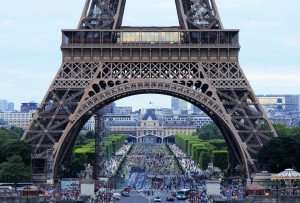 What could be better than a tour through our favorite Paris neighborhoods?
What could be better than a tour through our favorite Paris neighborhoods?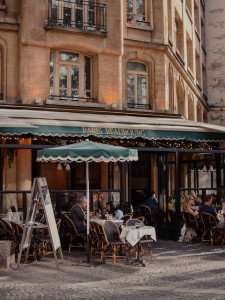
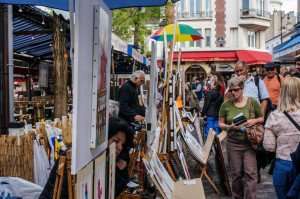 How Many Arrondissements Are There In Paris?
How Many Arrondissements Are There In Paris?
 The Paris arrondissements are:
The Paris arrondissements are: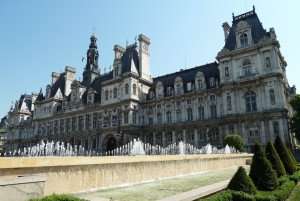 4th Arrondissement: Hôtel-de-Ville – The Hôtel-de-Ville, basically Paris’s version of City Hall, is but one of the many sites in the popular 4th arrondissement. It shares part of the Marais neighborhood with the 3rd, shares part of the Íle de la Cité with the 1st (including the part of the island that is home to the Cathedral of Notre Dame), as well as the Seine’s other island, Île Saint-Louis.
4th Arrondissement: Hôtel-de-Ville – The Hôtel-de-Ville, basically Paris’s version of City Hall, is but one of the many sites in the popular 4th arrondissement. It shares part of the Marais neighborhood with the 3rd, shares part of the Íle de la Cité with the 1st (including the part of the island that is home to the Cathedral of Notre Dame), as well as the Seine’s other island, Île Saint-Louis.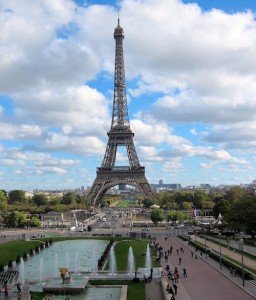
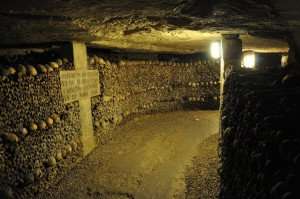 14th Arrondissement: Observatoire – Sure, it’s home to the Paris Observatory, but what most people go to the 14th for is the artsy Montparnasse neighborhood and the Paris catacombs.
14th Arrondissement: Observatoire – Sure, it’s home to the Paris Observatory, but what most people go to the 14th for is the artsy Montparnasse neighborhood and the Paris catacombs. 18th Arrondissement: Butte-Montmartre – The 18th is most known for the Bohemian hilltop town of Montmartre (also called “La Butte,” meaning hill), which was home to many famous artists, and is still home to the iconic Moulin Rouge cabaret, a bustling nightlife, and the Basilica of the Sacré-Coeur.
18th Arrondissement: Butte-Montmartre – The 18th is most known for the Bohemian hilltop town of Montmartre (also called “La Butte,” meaning hill), which was home to many famous artists, and is still home to the iconic Moulin Rouge cabaret, a bustling nightlife, and the Basilica of the Sacré-Coeur. Le Marais (3rd and 4th)
Le Marais (3rd and 4th)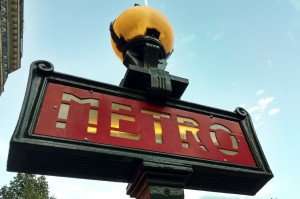 Getting to and from Le Marais in Paris
Getting to and from Le Marais in Paris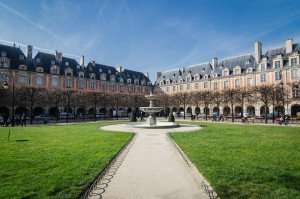 As I mentioned, Le Marais is full of shops, cafes, and restaurants, so it is easy to entertain yourself wandering through its streets. But here are some places to check out:
As I mentioned, Le Marais is full of shops, cafes, and restaurants, so it is easy to entertain yourself wandering through its streets. But here are some places to check out: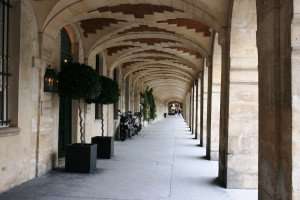
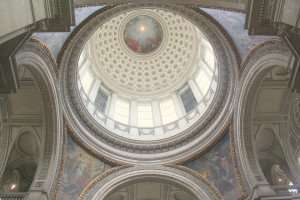 Le Quartier Latin (Latin Quarter)
Le Quartier Latin (Latin Quarter)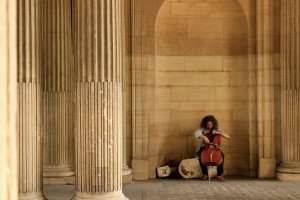 Getting to and from the Latin Quarter
Getting to and from the Latin Quarter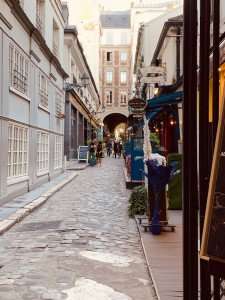 Make sure you leave plenty of time to discover the Latin Quarter in our Paris culinary vacations, as it is a wonderful place to explore. Here are some of our favorite places to check out in the Latin Quarter of Paris:
Make sure you leave plenty of time to discover the Latin Quarter in our Paris culinary vacations, as it is a wonderful place to explore. Here are some of our favorite places to check out in the Latin Quarter of Paris: Head to the 10th arrondissement to experience the hip side of Paris in the Canal Saint-Martin neighborhood. The canal is a waterway that cuts through the arrondissement from the Parc de la Villette to the Seine. Although closer to the center the canal is covered, here it is open, full of students, and lined with cafes, bars, and restaurants. It’s a fun, inexpensive neighborhood with a young vibe.
Head to the 10th arrondissement to experience the hip side of Paris in the Canal Saint-Martin neighborhood. The canal is a waterway that cuts through the arrondissement from the Parc de la Villette to the Seine. Although closer to the center the canal is covered, here it is open, full of students, and lined with cafes, bars, and restaurants. It’s a fun, inexpensive neighborhood with a young vibe.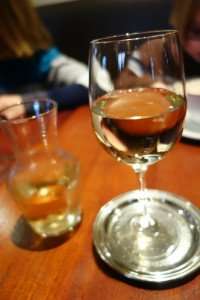 If you are traveling to the Canal Saint-Martin neighborhood in Paris by metro, it is served by several lines including:
If you are traveling to the Canal Saint-Martin neighborhood in Paris by metro, it is served by several lines including: Things to Do in the Canal Saint-Martin neighborhood
Things to Do in the Canal Saint-Martin neighborhood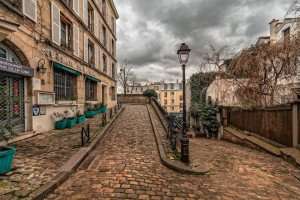 The Montmartre neighborhood in Paris, in the 18th arrondissement, is one of Paris’s premier art neighborhoods, former home to such icons of the art world as Monet, Modigliani, and Renoir. It’s winding, cobblestoned streets and village-like feel make it one of the top neighborhoods to explore in Paris. It has inspired or been featured in so much art, film, and literature, that it is one of the most recognizable of Paris neighborhoods.
The Montmartre neighborhood in Paris, in the 18th arrondissement, is one of Paris’s premier art neighborhoods, former home to such icons of the art world as Monet, Modigliani, and Renoir. It’s winding, cobblestoned streets and village-like feel make it one of the top neighborhoods to explore in Paris. It has inspired or been featured in so much art, film, and literature, that it is one of the most recognizable of Paris neighborhoods.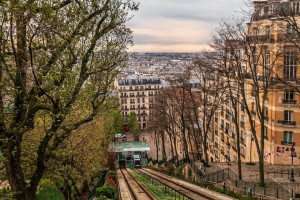 Getting to and from Montmartre in Paris
Getting to and from Montmartre in Paris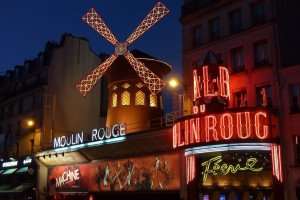 There are many amazing things to do and see in the Montmartre neighborhood in Paris, from the obvious to the off the beaten path.
There are many amazing things to do and see in the Montmartre neighborhood in Paris, from the obvious to the off the beaten path.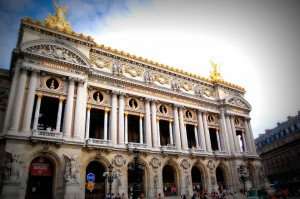 On my last stay in Paris we stayed in the Opéra district, which is in the 9th arrondissement. The area is partially a commercial center, home to banks, several wide Haussmannian boulevards (including the Boulevard Haussmann), and monuments such as the Opéra Garnier. But it also has fabulous shops, small streets lined with restaurants and bakeries, and old-fashioned arcades with antique shops, art galleries, and book sellers.
On my last stay in Paris we stayed in the Opéra district, which is in the 9th arrondissement. The area is partially a commercial center, home to banks, several wide Haussmannian boulevards (including the Boulevard Haussmann), and monuments such as the Opéra Garnier. But it also has fabulous shops, small streets lined with restaurants and bakeries, and old-fashioned arcades with antique shops, art galleries, and book sellers.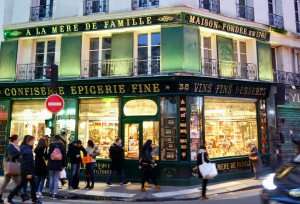 The L’Opéra neighborhood in Paris is served by several lines with many stops:
The L’Opéra neighborhood in Paris is served by several lines with many stops:
 The name “Bastille” is known throughout the world as the name of the prison that was stormed to start the French Revolution in 1789. Today there is no prison, just a lively neighborhood straddling the 4th, 11th, and 12th arrondissements. It, like the Canal Saint-Martin neighborhood, is an affordable and fun arrondissement.
The name “Bastille” is known throughout the world as the name of the prison that was stormed to start the French Revolution in 1789. Today there is no prison, just a lively neighborhood straddling the 4th, 11th, and 12th arrondissements. It, like the Canal Saint-Martin neighborhood, is an affordable and fun arrondissement. Although it doesn’t have a wealth of cultural site, the Bastille neighborhood is full of fun bars, nightclubs, and restaurants.
Although it doesn’t have a wealth of cultural site, the Bastille neighborhood is full of fun bars, nightclubs, and restaurants. Champs-Élysées
Champs-Élysées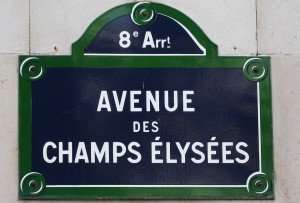 The Champs-Élysées neighborhood in Paris is served by several metro lines:
The Champs-Élysées neighborhood in Paris is served by several metro lines: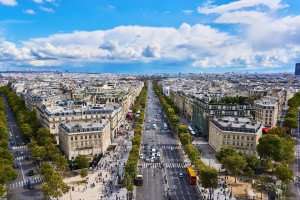 Like the Opéra neighborhood, the Champs-Élysées is known as a premier shopping district, but it also has several cultural sites to explore.
Like the Opéra neighborhood, the Champs-Élysées is known as a premier shopping district, but it also has several cultural sites to explore. The Île de la Cité and Île Saint-Louis are the two islands in the middle of the River Seine, making them one of the most unique and picturesque neighborhoods in Paris. They are also chock-full of amazing cultural sites, since they have always been at the center of Parisian history. The Île de la Cité, in fact, was the home of the Palais de la Cité, the palace of the kings of France, from the Sixth Century to the Fourteenth Century.
The Île de la Cité and Île Saint-Louis are the two islands in the middle of the River Seine, making them one of the most unique and picturesque neighborhoods in Paris. They are also chock-full of amazing cultural sites, since they have always been at the center of Parisian history. The Île de la Cité, in fact, was the home of the Palais de la Cité, the palace of the kings of France, from the Sixth Century to the Fourteenth Century. The Île de la Cité and Île Saint-Louis in Paris are served by the following metro lines:
The Île de la Cité and Île Saint-Louis in Paris are served by the following metro lines:
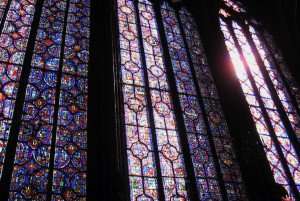 Sainte-Chapelle: I mention the Sainte-Chapelle often, as it is one of my favorite sites in Paris. Go on a sunny day and experience stained glass like you’ve never seen it before.
Sainte-Chapelle: I mention the Sainte-Chapelle often, as it is one of my favorite sites in Paris. Go on a sunny day and experience stained glass like you’ve never seen it before. Belleville (20th)
Belleville (20th)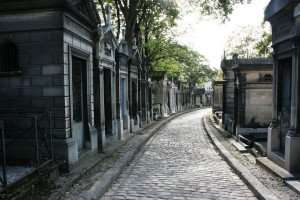 Belleville is an up-and-coming neighborhood, which makes it a bit less expensive but plenty interesting.
Belleville is an up-and-coming neighborhood, which makes it a bit less expensive but plenty interesting.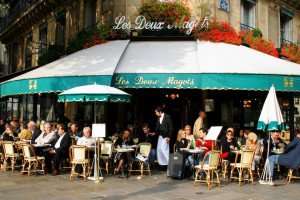 Saint-Germain-des-Prés is what most people think of when they think “Left Bank.” Former home to artists and existentialist philosophers, and as picturesque as can be, it is one of the most popular (and expensive) neighborhoods.
Saint-Germain-des-Prés is what most people think of when they think “Left Bank.” Former home to artists and existentialist philosophers, and as picturesque as can be, it is one of the most popular (and expensive) neighborhoods.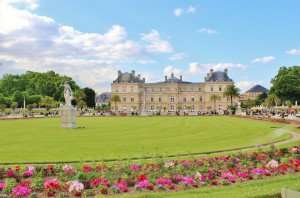 Saint-Germain is a small neighborhood, easy to explore on foot, and easily reached from the following metro stops:
Saint-Germain is a small neighborhood, easy to explore on foot, and easily reached from the following metro stops: Saint-Germain-des-Prés is full of art galleries, shops, famous cafes, and restaurants. It’s a great neighborhood to explore.
Saint-Germain-des-Prés is full of art galleries, shops, famous cafes, and restaurants. It’s a great neighborhood to explore.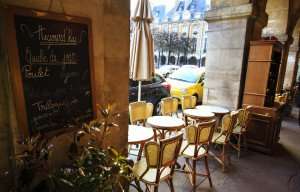 What are the best neighborhoods to stay in Paris?
What are the best neighborhoods to stay in Paris? What is the best neighborhood to stay in Paris with family?
What is the best neighborhood to stay in Paris with family?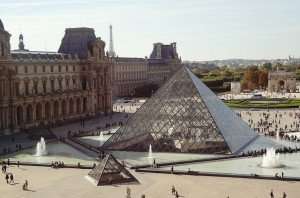 Which arrondissement to stay in Paris first time?
Which arrondissement to stay in Paris first time?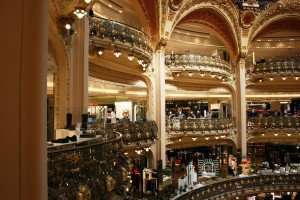 What are the best neighborhoods to shop in Paris?
What are the best neighborhoods to shop in Paris? Paris is one of our very favorite cities, and we have just scratched the surface of the amazing neighborhoods to explore there on our cooking vacations in Paris. If you’re interested in visiting Paris, we can design a custom stay for you including accommodations, cooking classes, pastry and dessert classes, cultural tours, transfers, and more. Or, you can check out our Paris culinary vacations to get started:
Paris is one of our very favorite cities, and we have just scratched the surface of the amazing neighborhoods to explore there on our cooking vacations in Paris. If you’re interested in visiting Paris, we can design a custom stay for you including accommodations, cooking classes, pastry and dessert classes, cultural tours, transfers, and more. Or, you can check out our Paris culinary vacations to get started: